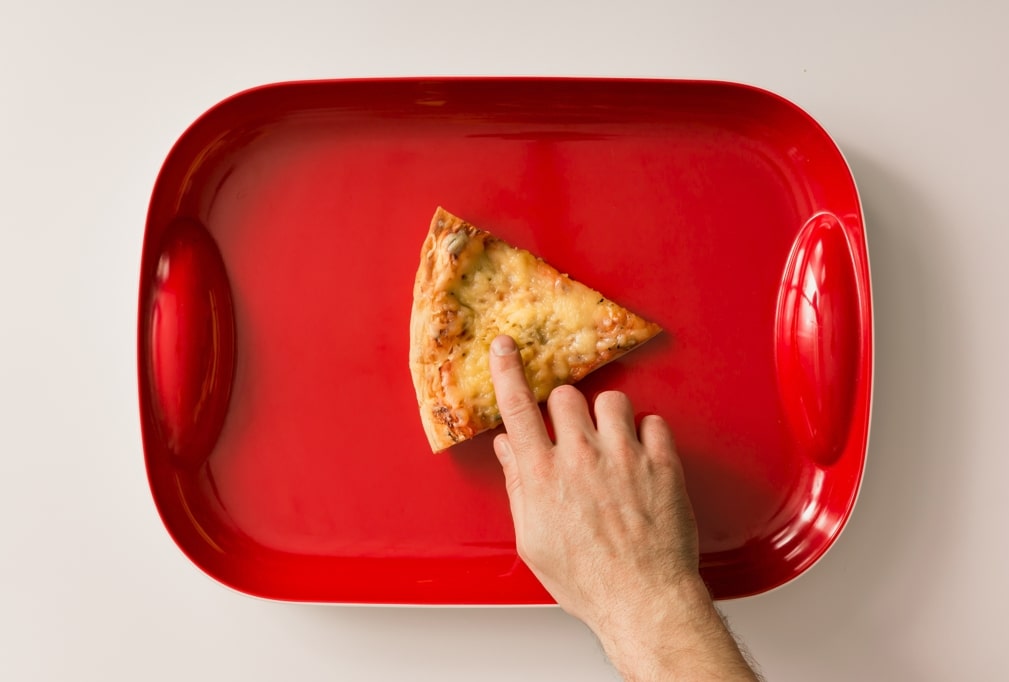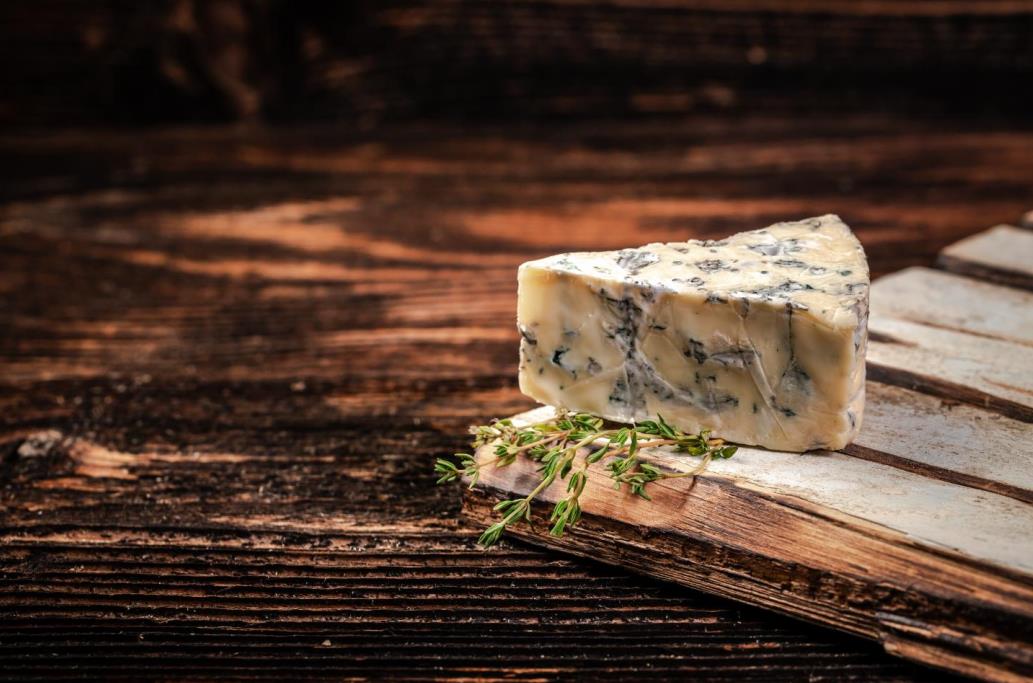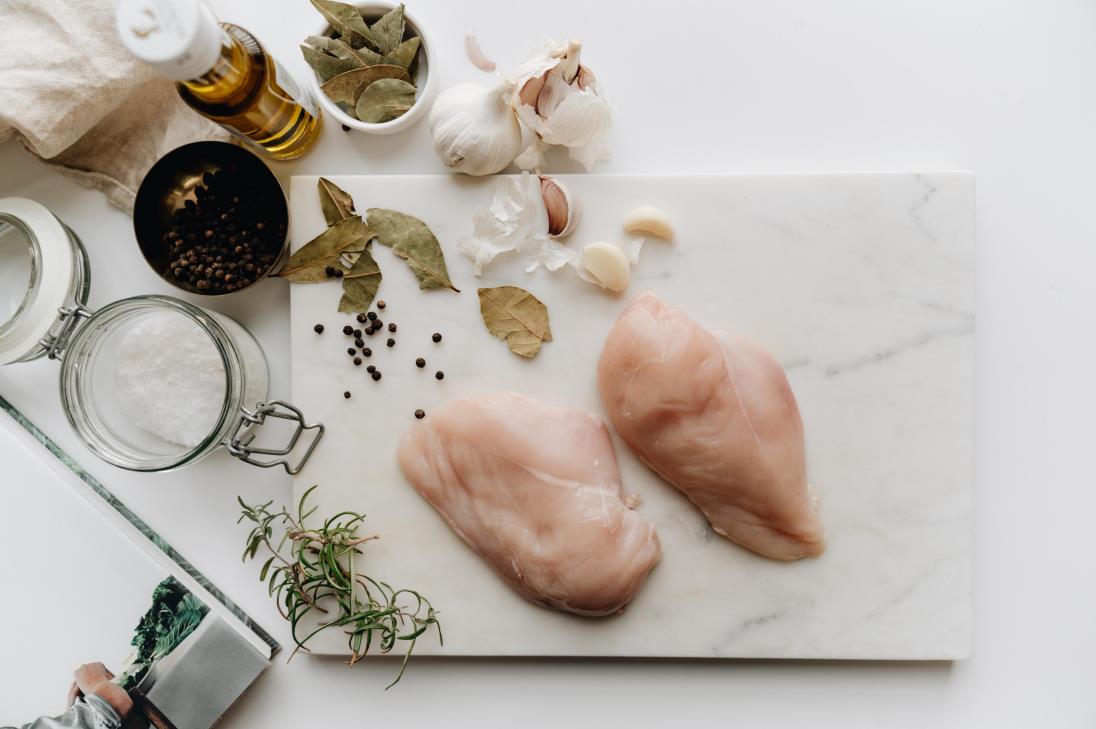As a chef or home cook, you know that having a good cutting board is paramount. Not only does it make prepping food easier, but it also helps keep your knives sharper for longer. However, failure to maintain your cutting board can lead to bacteria growth and even food poisoning. So, when is it time to replace your cutting board?
Replace your cutting board when it warps, becomes too brittle to cut on, or develops deep cracks or grooves. A new board is also in order if you notice a rancid smell or mildew or when stains become challenging to remove. High-quality wooden boards can last for 4–7 years, while plastic ones can last for 1–5 years.
This article takes a closer look at all you need to know about when to replace your cutting board. You’ll also learn how to clean your cutting board the right way and the factors to consider when picking a new board.
Table of contents
When to replace cutting boards?
There’s no exact time for when you should replace your cutting board because several factors come into play. We can say it depends on how well you take care of the board, the material cutting of design, and how often you use it. Quality is paramount regardless of what type of cutting board you choose.
However, there’s a consensus that the condition of the cutting board will warrant replacement. Below are some crucial signs that it might be time for a new cutting board:
When the board warps
The frustration that comes with warping is that not only does the cutting board become difficult to use, but it can also be dangerous. If your cutting board starts to warp, it’s definitely time for a new one.
Warping is when the surface of the cutting board curves or bows out of shape. It can be caused by several factors, such as exposure to extreme temperatures (either too hot or cold), humidity, improper cleaning, and more.
The porous material of wood is especially susceptible to warping. Plastic isn’t as likely to warp, but if it’s left in the sun or exposed to high temperatures for too long, it can become brittle and crack.
Some manufacturers claim that it’s possible to warp a cutting board back into shape, but this is not recommended. It’s much safer and easier to replace the board altogether.
When warping happens, the board can no longer maintain a flat surface. We all know the danger of trying to cut something on a curved surface – it’s much more likely for the kitchen knife to slip and cause an injury.
When the board is grooved and cracked
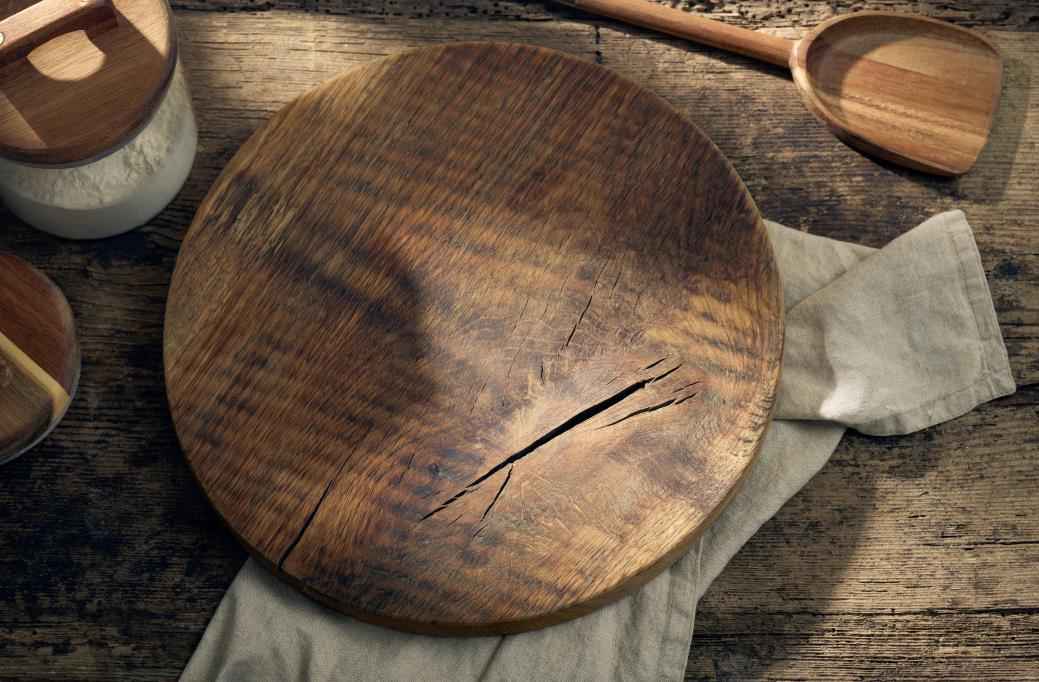
Chefs and home cooks know that a good cutting board is easy to clean and doesn’t have deep grooves or cracks. If your cutting board has become severely damaged, it’s time for a new one.
The main cause of grooves and cracks is wear and tear. The more you use your board, the more likely it will develop these unsightly blemishes.
A grooved or cracked board is a breeding ground for bacteria and can be difficult to clean. Moreover, the uneven surface can cause your knife to slip and nick. Not only is this dangerous, but it can also damage your blade.
Remember that’s where you cut your food, so any bacteria on the board can easily contaminate whatever you’re preparing. Not to mention, it’s just not sanitary.
Sanding is a brilliant option for boards with light grooves and cracks. While it won’t completely fix the board, it will make it easier to clean and less hazardous to use. However, if the board is severely damaged, it’s best to replace it.
When the board develops a rancid smell
A rancid or mildew smell is a sign that something is wrong with your cutting board. It’s easy to ignore when it’s not a strong smell, but it’s definitely something you don’t want to ignore.
Mildew is a fungus that can develop on many surfaces, including cutting boards. It thrives in moist environments and produces an unpleasant odor. However, it’s also possible that bacteria is the cause of the foul smell.
The smell may come off as a nasty combination of vinegar and old cheese. If your cutting board starts to smell, it’s best to take a closer look at it. Check for any visible signs of mildew or bacteria.
The smell is often difficult to wash away, even with soapy water and a scrub brush or 70% ethanol or isopropanol solution. The odor is nothing to sneeze at and is definitely a sign that it’s time for a new cutting board, especially if it doesn’t come off after cleaning.
When the board is covered with stains
Cutting boards inevitably get stained, but that’s no excuse to keep using a board covered in grime. A cutting board with stains is an easy target for bacteria.
Stains occur when food, grease, or juices from raw meat and other ingredients seep into the surface of the board. Over time, these stains can become difficult to remove, even with vigorous scrubbing.
Stains are unsightly and can be a source of bacteria. Soaking the board in a vinegar solution with 3% hydrogen peroxide for 30 minutes can help remove some of the stubborn stains. But if the stains are too deep or too many, it’s time for a new cutting board.
When the board is too soft or too slippery
A cutting board often becomes too soft or slippery from constant washing and exposure to moisture. It becomes a major safety hazard when it can no longer support the weight of the food or the knife.
A cutting board that is too soft will not withstand the force of the knife blade and can easily tear. A slippery board poses the same dangers as a warped or grooved board – it’s much more likely for the knife to slip and cause an injury.
Replace your cutting board if it becomes too soft or too slippery. It’s not worth the risk of injuring yourself or someone else.
How to clean your cutting board

Taking care of your cutting board is the best way to ensure its longevity. Apart from proper storage, cleaning ensures that the board remains in good condition.
Different materials of cutting boards have different cleaning directions. Below are some general tips for different cutting boards.
Cleaning wooden cutting boards
The best wood for a cutting board is one that’s durable, water-resistant, and easy to maintain. Most manufacturers recommend cleaning wooden cutting boards with mild dish soap and warm water. Handwashing is the best way to clean the board because a dishwasher can damage the wood.
You can use a light dishwashing detergent or a vinegar and water solution. Use a sponge to scrub the surface of the board gently. Be careful not to saturate the wood with too much water, or the board may warp. Wash both sides of the board and the edges to prevent uneven drying, which can also cause the wood to warp.
To remove any grease or food items, use baking soda and water paste. Rub the paste into the wood and let it sit for about 10 minutes. Rinse the board with warm water and dry it with a soft cloth.
Use kosher salt and half a lemon to wash away any unpleasant smells. Sprinkle the salt on the board and then rub the lemon half over the surface. Rinse with warm water and dry. Stand the board upright to allow it to dry completely. Use food-grade mineral oil to seal the wood and protect it from moisture.
Cleaning plastic cutting boards
When comparing wood vs. plastic cutting board material, plastic is a little easier to clean. You can use the dishwasher, but many people find that the dishwasher doesn’t always clean the board well. So it’s best to hand-wash plastic boards to prevent them from warping.
Using bleach, a teaspoonful of bleach with some water is a great way to clean and disinfect the board. Scrub with a soft sponge, then rinse with hot water and air dry.
To remove stains and scuffs, use a baking soda, salt, and water paste, one tablespoon for each. Gently scrub the surface with a sponge and rinse with hot water.
Cleaning bamboo cutting boards
Bamboo is hardwood and can be difficult to clean if not treated properly. The best way to clean a bamboo cutting board is with hot, soapy water and a sponge. You can also use a vinegar and water solution if needed.
Before storing it, be sure to rinse the board well and dry it with a paper towel. Never place bamboo in a dishwasher – the high heat can cause the board to split.
How to pick a new cutting board
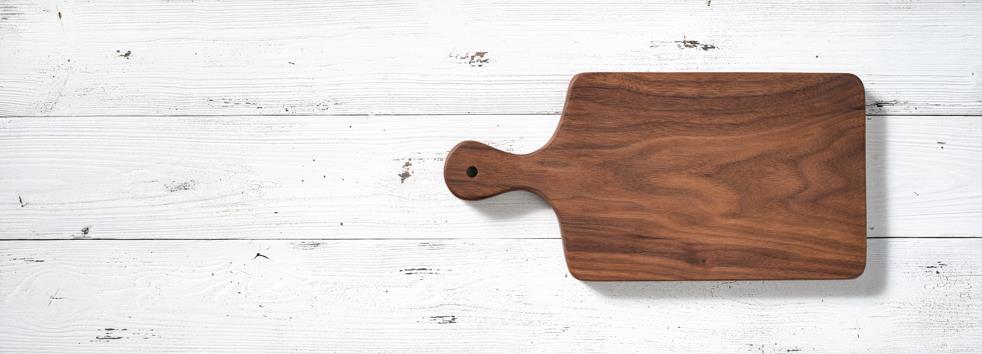
Shopping for a cutting board can be a little overwhelming because there are so many different types and materials to choose from. Here are a few things to keep in mind when shopping for a new cutting board:
- The size of the board: Make sure to pick a board that’s big enough to handle all of your slicing and chopping needs. Different cutting board sizes exist, but standard boards measure 12 inches by 18 inches.
- Durability: Consider the board’s material and how well it will stand up to wear and tear. Some materials, like bamboo and wood, are more durable than plastic.
- Sanitation: The most sanitary cutting board is easy to clean and sanitize. Glass boards are the most hygienic. Still, bamboo and wood boards can also be treated with a food-grade oil to help prevent bacteria build-up.
- Aesthetics: Cutting boards come in all shapes and sizes and colors and designs. If you want a cutting board that will look nice on your countertop, consider one that will match your kitchen decor.
- Price: Boards range in price depending on the material and size. Plastic cutting boards are the cheapest, while wooden cutting boards are the most expensive. The price range for plastic boards ranges from $5–$40, while wooden boards range from $17–$600.
FAQs
How long should a cutting board last?
The longevity of a cutting board depends on the material and how well it is taken care of. A good rule of thumb is that a plastic cutting board will last for about 1–5 years, a wood cutting board will last for about 4–7 years, and a bamboo cutting board will last for about 3–7 years. Maintain your cutting board by washing it with hot, soapy water and drying it off immediately after use.
How often should cutting boards be sanitized?
It’s important to sanitize your cutting board after every use. The best way to do this is to wash it with hot, soapy water and then rinse it with a diluted bleach solution (1 part bleach to 10 parts water). You can also use an alcohol or vinegar solution.
Why do plastic cutting boards smell?
Plastic cutting boards start to smell with continued use. They develop grooves and valleys where bacteria can grow and thrive. The bacteria give off a sour, ammonia-like smell. To prevent bacteria build-up, clean your plastic cutting board with hot, soapy water and a diluted bleach solution after every use.
Conclusion
Understanding when to replace cutting boards is key to keeping your kitchen safe and sanitary. The best time to replace your cutting board is when it develops grooves, warps, or starts to give off a foul odor. If you notice stains that won’t go away even with vigorous scrubbing, it’s probably time to replace your cutting board.
Visit our blog for more information on cutting boards and how to care for them. You can also check out our store for high-quality kitchen knives that will change your entire kitchen experience.





